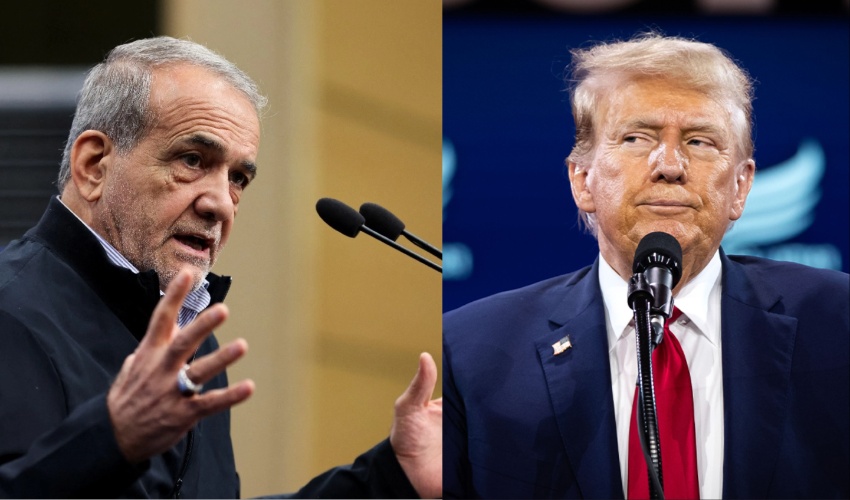Three weeks after the U.S. imposed its “maximum pressure” policy against Iran, the Iranian rial continues to lose value against the dollar, with the latest exchange rate reaching 921,350 rials per U.S. dollar.
The Ostensibly Firm Positions of U.S. and Iranian Leaders
In fact, Donald Trump signed an order to implement the maximum pressure strategy against the Islamic Republic of Iran on the second day of his presidency. However, he simultaneously addressed Iranian officials and citizens, stating he was not pleased to sign this order and that if Iran could prove and guarantee it is not pursuing nuclear weapons, he would seek to meet with Iran’s president and sign a new, serious nuclear agreement.
Trump’s order immediately drew a reaction from Ayatollah Seyyed Ali Khamenei, the Supreme Leader of Iran. He emphasized that two years of negotiations, concessions, and compromises with the U.S. ultimately proved futile, adding: “The U.S. violated the same agreement—despite its flaws—and withdrew from it. Therefore, negotiating with such a government is unwise, unintelligent, and dishonorable, and we must not engage in talks.”
Potential Scenarios
Despite the Iranian leadership’s firm stance against the U.S., a content analysis suggests these statements are not an absolute “no” or definitive negative position but rather a reaction to Trump’s maximum pressure order. Thus, considering all factors, four distinct scenarios may unfold in Iran-U.S. relations, briefly outlined below:
1. Scenario of Neither War nor Agreement:
This resembles the situation Iran experienced during two relatively long periods: 2003–2015 and 2017–2025. Iran’s philosophy in this scenario is to resist U.S. demands and avoid negotiations or peace, even at a heavy cost. Past experiences show this scenario leads to increased U.S. pressure and further economic and political fragility for Iran.
2. Scenario of War:
Donald Trump has repeatedly stated that if Iran and the U.S. fail to reach an agreement, he may not be able to prevent Israel from launching airstrikes on Iran’s nuclear facilities. In essence, he has explicitly—albeit indirectly—threatened Iran with an attack through its key regional ally. Such an event could destabilize regional security and create a complex military situation across the Middle East.
3. Scenario of Regime Change in Iran:
Under this scenario, the U.S., with help from regional countries led by Israel and leveraging Iranian opposition groups abroad, would attempt to orchestrate a change in Iran’s political system. While this scenario is heavily promoted by various opposition factions, and some within Iran accuse the U.S. of supporting such efforts, in practice, Donald Trump seems unlikely to pursue this complex, costly, and uncertain path.
4. Scenario of Agreement and Peace
This model mirrors the two-year negotiations that led to the JCPOA (Joint Comprehensive Plan of Action), the same agreement Trump violated and abandoned. Now, as in 2018, he seeks a new deal. If the parties reach a nuclear agreement, Trump’s eagerness and Iran’s needs could pave the way for broader normalization of relations—even potentially reopening embassies and a Trump visit to Tehran!
Which Scenario Is More Likely?
To answer this, two issues must be examined simultaneously:
– Iran’s Current Situation: Domestically, Iran faces a severe economic crisis (including the historic collapse of its national currency), significant political tensions, intensified succession debates at the pinnacle of power, and factional rivalries. Regionally, after the weakening of Hamas in Gaza, Hezbollah in Lebanon, and especially Bashar al-Assad’s decline in Syria, Iran is in its worst regional position in three decades. Internationally, Iran lacks strong allies; neither Russia nor China qualify, as both sided against Iran during UN resolutions and the UAE-Arab League claims over Abu Musa, Greater Tunb, and Lesser Tunb.
– Trump’s Goals: His primary red line is preventing Iran from acquiring nuclear weapons. He then seeks a multidimensional peace with Iran to normalize relations. Ideally, he aims to become the first U.S. president since Jimmy Carter to normalize ties with Iran and travel there.
The Path Ahead
While existing in crisis has become routine for the Islamic Republic, and its resolve to address crises remains weak, it has shown flexibility in pivotal cases like Resolution 598 (ending the Iran-Iraq War) and the JCPOA (lifting sanctions and exiting Chapter VII of the UN Charter). Thus, under current conditions, pursuing a new agreement seems more likely than the other three scenarios. Consequently, around Nowruz (Persian New Year), clearer signals from both sides may emerge—a process currently mediated by Qatari, Iraqi, and Omani officials between Tehran and Washington.


